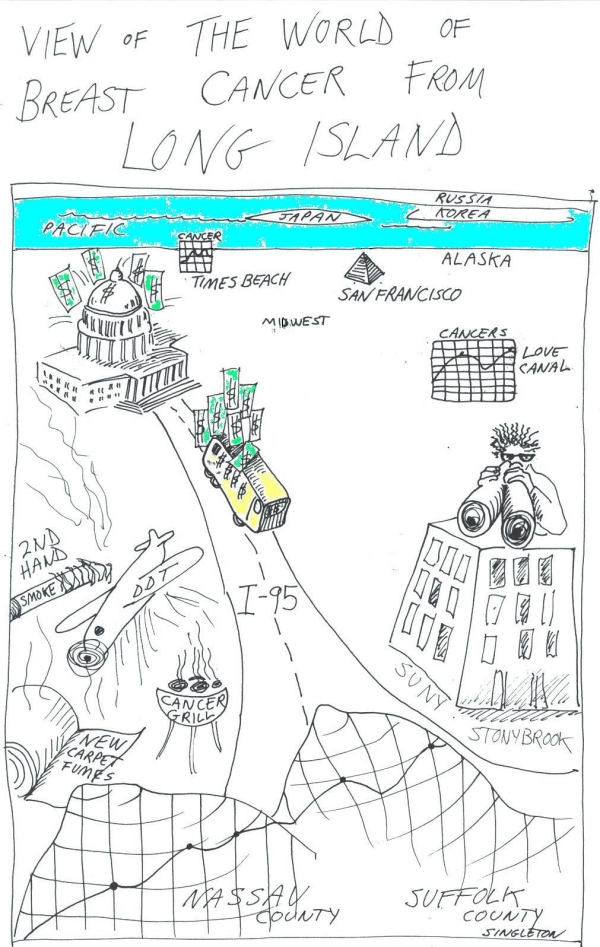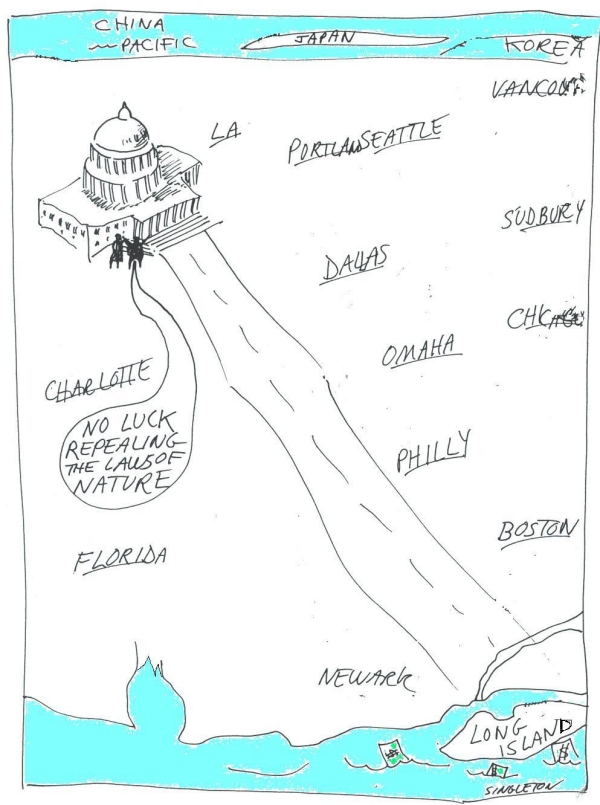View Of The World Of Breast Cancer From Nassau And Suffolk Counties

The Long Island Breast Cancer Study, With Apologies To The Artist Saul Steinberg
On August 6, 2002, the National Cancer Institute released its long-awaited study on pollution and Long Island breast cancer rates. It found no clear links between the two—a result that greatly disappointed the breast cancer research advocates who had pushed for the study, and the politicians who funded the $8 million undertaking.
The newly-released study is a major part of the $30 million Long Island Breast Cancer Study Project, which Congress established in 1993 in response to intensive lobbying by Long Island activists. Whether upcoming studies in the project will establish a pollution-breast cancer link is highly dubious. There is little hard evidence that environmental pollutants have any impact on cancer rates; moreover, the notion that Long Island itself has comparatively high rates of breast cancer is extremely questionable.
But what this episode does demonstrate is the boondoggling nature of congressional micromanagement of scientific research. The project was triggered by pressure from regional cancer activists. Congress responded not just with funding, but with pork-barrel specifications: only Long Island was to be studied; Long Island researchers were to be given funding preference; and Congress specified both the research methodology and the class of environmental factors that were to be examined. It’s a wonder congressional staffers weren’t given lab coats and sent up to Nassau and Suffolk counties.
The whole sorry story was described in a recent Newsday series.
Remember that famous New Yorker cartoon, View of the World From 9th Avenue, which epitomized the “New York-centric” worldview?
With apologies to the artist, we think that’s an accurate way of depicting this event.
Before the National Cancer Institute’s study, Carcinogenic Causation Theories and Cluster Claims Run Wild in New York’s Nassau and Suffolk Counties

The National Cancer Institute’s Study Is Finally Published

Afterwards
